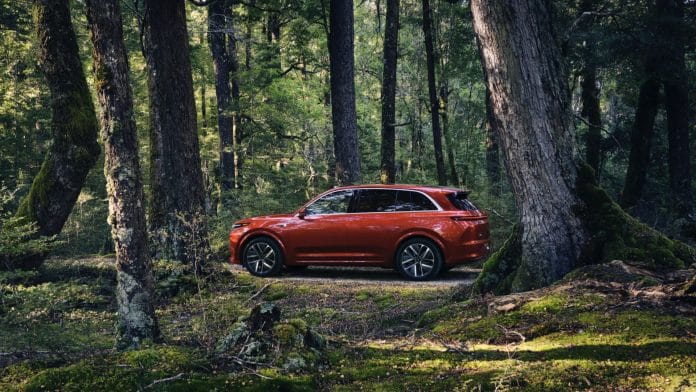A few weeks ago, I wrote about the emergence of different types of hybrid vehicles. Since then, I’ve had discussions with executives from various automobile companies who are on different sides of the electric vehicle versus hybrid debate. The debate is becoming quite feisty, with domestic players Mahindra & Mahindra and Tata Motors backing EVs, while India’s largest carmaker, Maruti Suzuki, and its partner, Toyota, side with the hybrids.
Both sides have valid points, and so do the companies sitting on the fence. The EV lobby argues that hybrids are unnecessarily complicated and are ‘yesterday’s technology’, while hybrid lobby counters that sales for hybrid cars are increasing across the world, whereas EV sales are faltering despite incentives.
It is true that EV sales are slowing and resale values are dropping. But it is also true that EVs are still great fun to drive, and if you’re looking for a commuter vehicle, an EV is a fantastic bet.
Personally, I believe the market is large enough for multiple technologies to coexist. The long game, as almost everybody acknowledges, is hydrogen-powered vehicles. Now, there is a debate over hydrogen too – whether hydrogen combustion is better or hydrogen fuel cell. That said, until we can find a cheaper way to extract hydrogen, the debate is moot.
But there is another thing that almost everybody, even companies that haven’t chosen sides in the debate, are closely monitoring – the rise of range extenders. A few weeks ago, when I wrote on the different types of hybrids, I mentioned EREV or extended-range electric vehicles.
It is almost certain that multiple carmakers, having observed the success of EREVs in China, are dipping their toes in this space, the latest being Korean automaker Hyundai Motors.
Also read: EV lifespan is getting shorter. They are becoming like smartphones
Not that revolutionary
Hyundai recently announced in its ‘New Hyundai Way’ mission statement that it would introduce new EREV models in North America and China, though no mention was made of India.
Now, it is not an EREV because it has a bigger battery – EV batteries are heavy and despite recent price drops, still not quite cheap. An EREV instead has a generator on board – a small internal combustion engine (ICE) that charges the battery. This means that the technology can effectively give an EREV double or triple the range of a pure EV with a similar sized battery, despite sipping very little fuel.
One can argue that this defeats the purpose of an electric vehicle, which, after all, is meant to have ‘zero emissions’. Or is it? If the idea is to reduce energy consumption, particularly from fossil fuels, therefore reducing carbon emissions, then an EREV is the best bet. This is because the ICE engine in an EREV doesn’t have to be a fire-breathing V8 under the hood, it could be a small 660 cc three-cylinder pot, running at an efficient speed, and thus having the lowest possible emissions. And because the engine is not connected to the drive wheels, it is solely running as a generator for the batteries. The vehicle remains an electrically driven vehicle.
And here is the funny thing, the EREV technology is in no way revolutionary. We humans have been generating electricity using internal combustion engines for mobility for years. How do you think all diesel railway locomotives run? They are all ‘diesel electrics’ because the complex machinery that would have been required for a ‘direct drive’ engine is not worth the headache.
Also read: Nissan wants to reclaim its space in India. The new X-Trail isn’t the way to do it
A lot cleaner
The diesel engine in locomotives is a generator that produces the electricity that drives the wheels. By adding a battery to the mix, to store energy, you won’t need to run the engine hard whenever you need a lot of power.
Is this the best of both worlds? Honestly, I still believe that if you are not driving long distances, fully electric vehicles are the best solution. But the fact is that an EREV takes away both range and charging anxiety. But since you can also charge your vehicle if you have access to a charging facility, you could technically run an EREV as a pure-electric much of the time. And, one could also develop an EREV with a small engine that runs on CNG, to make it cleaner. And no matter which way you look at it, an EREV is a lot cleaner than vehicles running on ethanol-doped petrol with the ethanol coming from foodgrains.
But I could be very wrong here. It is almost impossible to decode how the market will evolve, and that is why I feel the car buyer should decide. At the end of the day, I can evaluate cars and automotive technologies and judge them to be good or bad, but I can’t force someone to spend their money on something they don’t want or stop them from spending money on something stupid, like car sunroofs in India. Believe me, I have been driving the new Suzuki Swift for the past couple of weeks and while it is genuinely lovely, I don’t miss the sunroof at all.
That is why I strongly believe that policies should be technology-agnostic. As India grows economically, we will need to produce more energy and a lot of that will come from hydrocarbons. Forcing consumers and manufacturers down the battery-electric path might have us in the soup in 10-15 years time. So, we must tax vehicles on the basis of their emissions, because our main policy goal should be to reduce emissions and hydrocarbon usage, but not to decide how we achieve it.
@kushanmitra is an automotive journalist based in New Delhi. Views are personal.
(Edited by Aamaan Alam Khan)







Sorry, bro india is now busy in asking people caste and asking reservation..
Better come in next decade